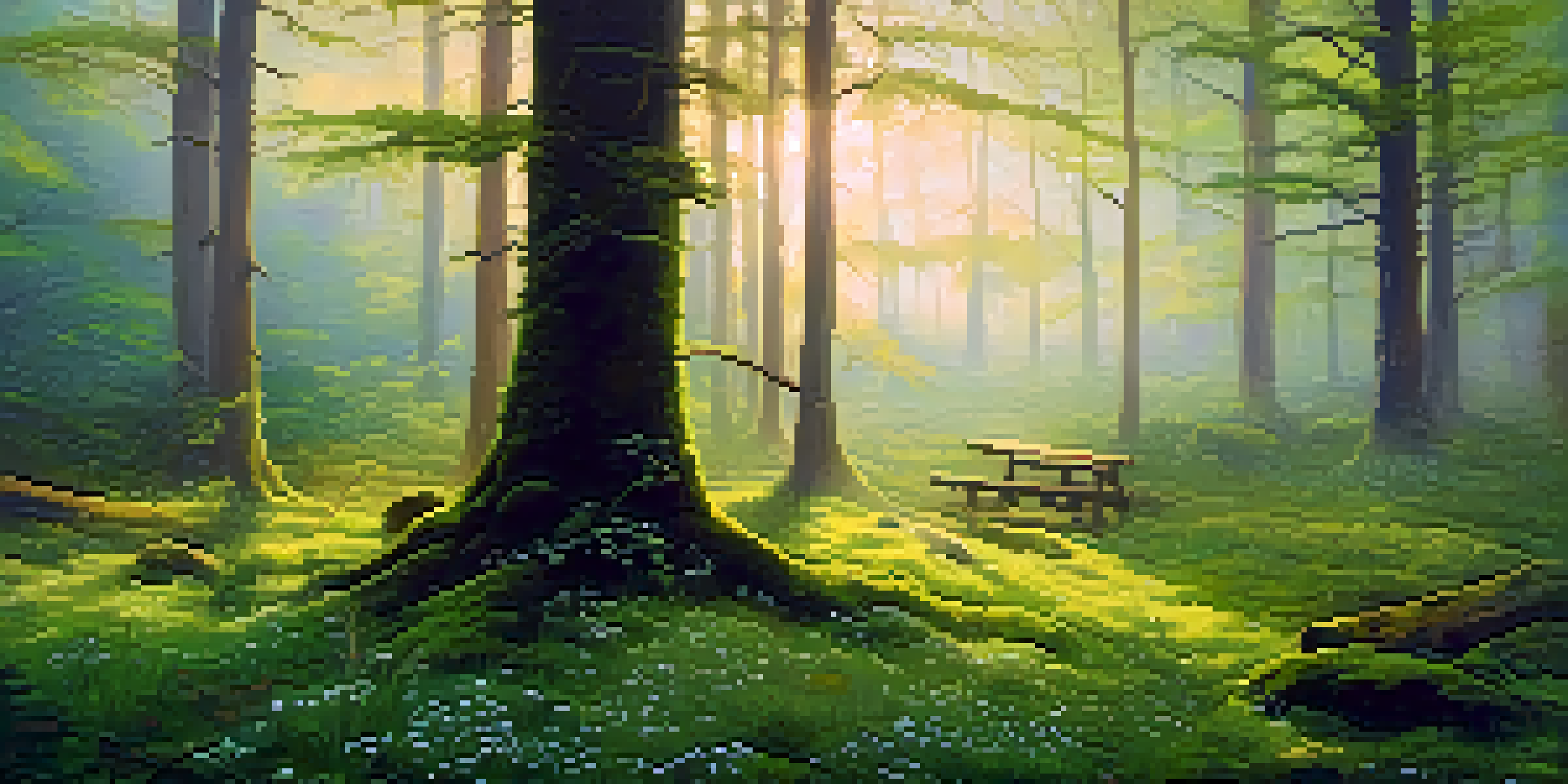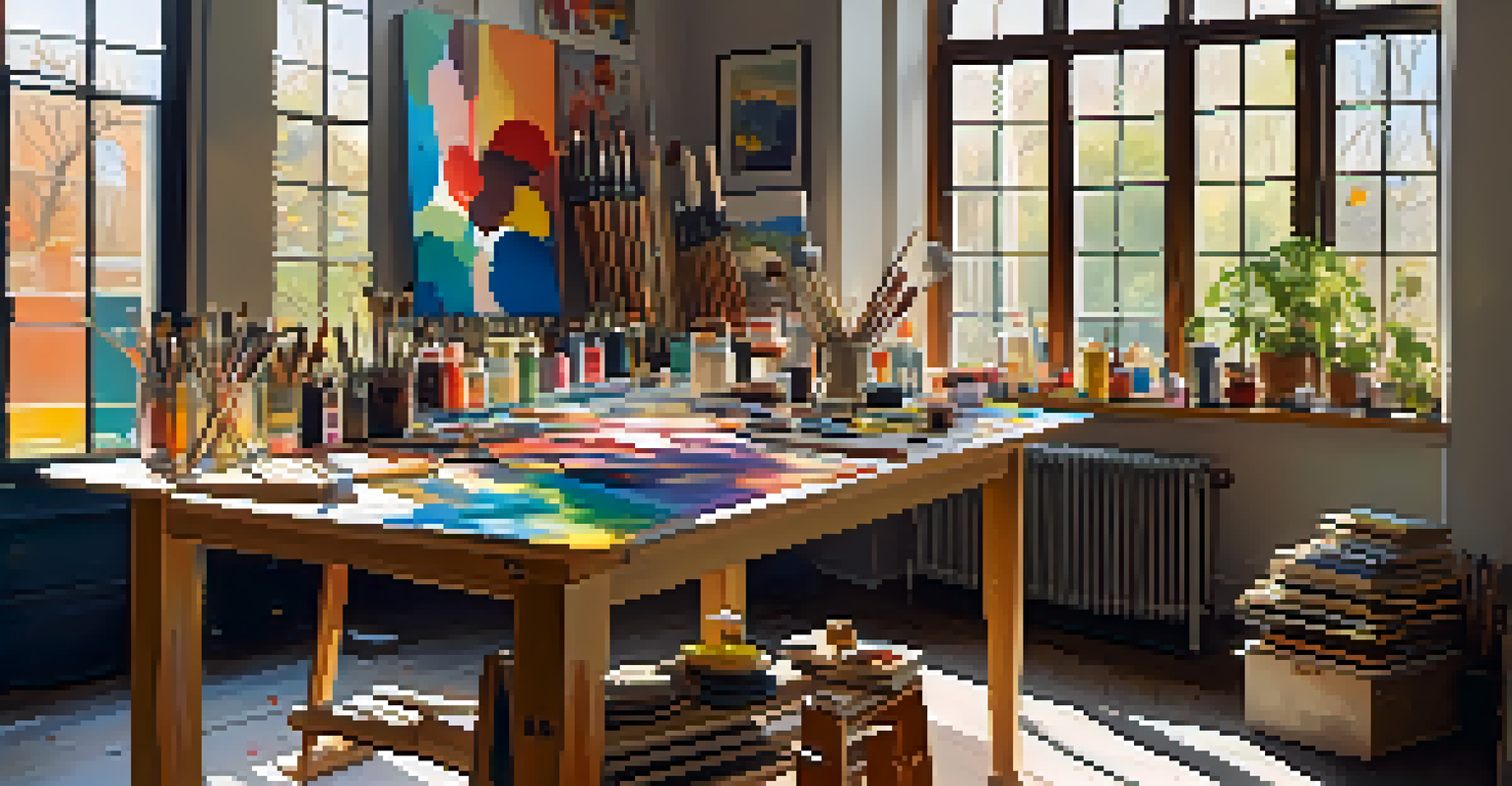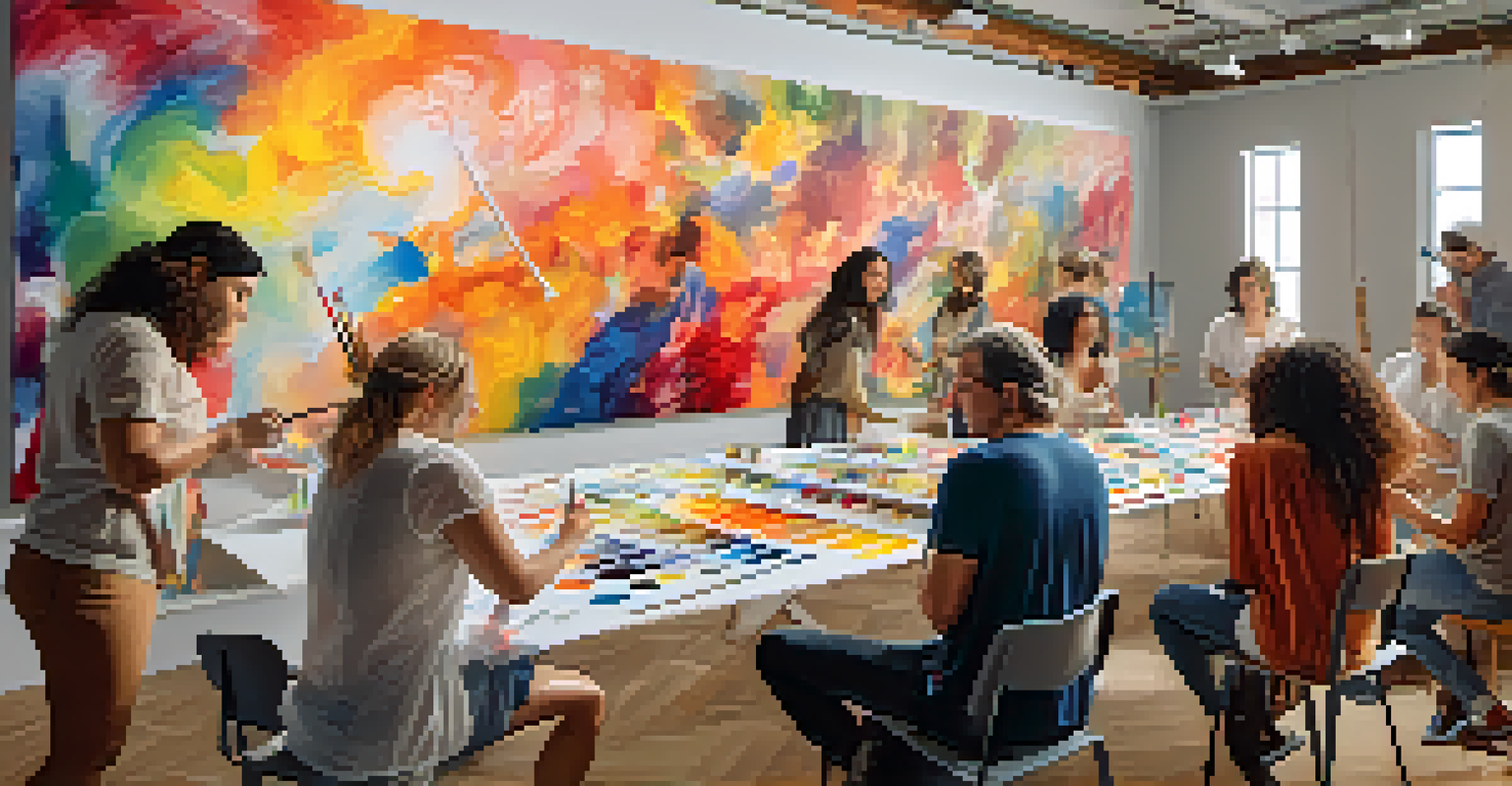Artistic Collaborations: Hallucinogens as a Creative Catalyst

Understanding Hallucinogens and Their Effects on Creativity
Hallucinogens, like LSD and psilocybin, are substances that alter perception and enhance sensory experiences. They often lead users to experience thoughts and visuals in unique ways, making them intriguing tools for artists. By unlocking new neural pathways, these substances can facilitate a deeper connection to one's creative instincts.
The greatest artists are always inspired by the greatest ideas.
For many, the creative process is often a challenge, filled with blocks and self-doubt. Hallucinogens can dissolve these barriers, providing a fresh perspective that often leads to innovative ideas. This transformative effect can be particularly beneficial in collaborative settings where multiple creative minds converge.
While the use of hallucinogens isn't for everyone, their role in artistic collaboration is fascinating. They can encourage open-mindedness and spontaneity, vital elements in creating something truly unique. It's not just about the substance; it's how it can enhance communication and idea-sharing among artists.
Historical Context: Artists and Hallucinogens
Throughout history, many artists have turned to hallucinogens to enhance their creative processes. Prominent figures like Aldous Huxley and the Beatles famously explored these substances, often producing groundbreaking work. Their experiences opened doors to new artistic movements and styles, showing that these tools can push boundaries.

In the 1960s, the counterculture movement embraced hallucinogens, fueling a wave of creativity in music, visual arts, and literature. This period is often cited as a significant time for the exploration of consciousness in the arts. Artists sought to convey their expanded perceptions through their work, leading to iconic pieces that still resonate today.
Hallucinogens Enhance Creativity
Substances like LSD and psilocybin can unlock new neural pathways, allowing artists to overcome creative blocks and explore innovative ideas.
However, it's essential to recognize that not all artistic movements involving hallucinogens were celebrated. Some faced backlash and scrutiny, leading to a complex relationship between society, art, and these substances. Understanding this history helps us appreciate the nuanced role hallucinogens have played in shaping creative expression.
Case Studies: Iconic Collaborations Fueled by Hallucinogens
Consider the collaboration between John Lennon and Paul McCartney; their experimentation with psychedelics significantly influenced their songwriting. Songs like 'Lucy in the Sky with Diamonds' reflect the vivid imagery and surreal themes inspired by their experiences. This partnership showcases how shared exploration can lead to groundbreaking music.
Creativity is not a competition; it’s a collaboration.
Visual artists, too, have found inspiration in hallucinogens. For instance, the work of Salvador Dalí was often infused with surreal, dreamlike qualities that echoed the hallucinogenic experience. His canvases invite viewers to explore bizarre landscapes, encouraging a deep engagement with the unconscious mind.
These examples highlight the power of collaboration and shared experiences in art. When artists come together under the influence of hallucinogens, they can create something that transcends the ordinary, pushing the limits of imagination and expression.
The Science Behind Hallucinogens and Creativity
Research shows that hallucinogens can alter brain connectivity, enhancing creativity. A study from Imperial College London found that substances like psilocybin increase communication between different brain regions, which can lead to novel ideas and solutions. This scientific backing helps demystify the connection between these substances and artistic output.
Moreover, hallucinogens can elicit profound emotional experiences, making art creation feel more meaningful. The ability to tap into deep-seated feelings can lead to artwork that resonates with both the creator and the audience. This emotional depth is often what makes art impactful.
Historical Use by Artists
Many renowned artists, such as the Beatles and Salvador Dalí, have historically used hallucinogens to fuel their creative processes and produce groundbreaking work.
However, it's important to approach this topic with caution. The effects of hallucinogens can vary greatly among individuals, and not everyone may experience heightened creativity. Understanding the science helps frame the conversation around their use in artistic collaboration.
Contemporary Artists and Their Use of Hallucinogens
Today, many contemporary artists continue to explore hallucinogens as part of their creative rituals. For instance, musicians in genres like electronic and psychedelic rock often reference their experiences with these substances in their work. This modern movement reflects a renewed interest in the intersection of art and altered states of consciousness.
Visual artists are also venturing into this territory, using hallucinogens to inspire innovative techniques and themes. Their work often challenges traditional norms, inviting viewers to experience art in new ways. This evolution demonstrates that the connection between hallucinogens and creativity remains vibrant.
However, contemporary artists often advocate for responsible use, emphasizing the importance of intention in the creative process. They understand that while hallucinogens can enhance creativity, they are not a magic solution. Maintaining a balance between exploration and mindfulness is key to harnessing their potential.
The Risks and Ethical Considerations of Using Hallucinogens
While hallucinogens can offer creative benefits, it's crucial to recognize the risks involved. Misuse can lead to negative experiences, including anxiety and paranoia, which can hinder creativity rather than enhance it. Artists must weigh these risks carefully when considering their use in collaborative settings.
Additionally, the legality of hallucinogens varies widely around the world, raising ethical questions about their use. Artists must navigate these legal landscapes, ensuring they are not putting themselves or their collaborators in jeopardy. It’s essential to promote a culture of safety and respect within artistic communities.
Risks and Ethical Considerations
While hallucinogens can inspire creativity, artists must navigate the potential risks and legal implications associated with their use.
Ultimately, the dialogue around hallucinogens in art is complex. By acknowledging both the potential benefits and the risks, artists can foster a more informed and responsible approach. This balance is crucial in ensuring that the exploration of creativity remains a positive and enriching experience.
Future Perspectives: Hallucinogens in Artistic Collaboration
As societal attitudes toward hallucinogens continue to evolve, the future of their use in artistic collaboration looks promising. Increasingly, artists are using these substances not just for personal exploration but as a means to foster collective creativity. This shift could lead to a new wave of collaborative art that pushes boundaries.
Research into the therapeutic effects of hallucinogens is also gaining traction, suggesting that they could play a role in creative recovery and exploration. Artists who have faced burnout or creative blocks may find renewed inspiration through responsible use. This potential is an exciting frontier for the art community.

Looking ahead, it will be fascinating to see how hallucinogens will shape artistic movements and collaborations. As artists continue to experiment and share their experiences, we may witness the emergence of revolutionary art forms that challenge our perceptions and enrich our cultural landscape.